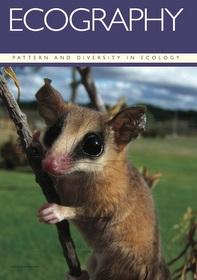
Cover story in the August issue of the Swedish journal "Ecography" by CCNY researchers studying mouse opossums and geographic isolation in Venezuela.
Competition among species can cause geographical isolation
In a study that could alter traditional notions in the fields of ecology and evolutionary biology, three City College of New York researchers present results indicating that competition between two species can lead to the geographic isolation of one of them. The finding by biologists Eliecer E. Gutiérrez,Robert A. Boria and Robert P. Anderson is the cover story in the August issue of the Swedish-published journal "Ecography" under the title, "Can biotic interactions cause allopatry? Niche models, competition, and distributions of South American mouse opossums."
In their study of mouse opossums in Venezuela, the trio conducted geographic information systems (GIS)-based ecological niche modeling analyses that revealed a phenomenon of wide ecological and evolutionary importance.
As explained in their blogpost on the journal's website, analyses suggest that competition between two species of mouse opossums greatly restricts the distribution of one of them, isolating one of its populations from all others. This study counters traditional notions in ecology that do not consider the possibility that geographic isolation (= "allopatry") could be promoted by biotic interactions (competition, predation/parasitism, mutualism, etc.).
"Geographic isolation has profound consequences for the long-term viability of a population and for its genetic evolution, making this finding noteworthy and important," said Dr. Anderson, Professor in City College's Biology Department.
He served as the research mentor to Dr. Gutiérrez, the paper's first author, who conducted the research as part of his dissertation at CCNY and the Graduate Center of CUNY. Dr. Gutiérrez is now a postdoctoral fellow at the Smithsonian Institution's Center for Conservation and Evolutionary Genetics in Washington, D.C.
Mr. Boria, the third member of the team, will receive his MS in biology from CCNY this fall.
The study was supported, among other sources, by grants from the National Science Foundation.
About The City College of New York
Since 1847, The City College of New York has provided low-cost, high-quality education for New Yorkers in a wide variety of disciplines. More than 16,000 students pursue undergraduate and graduate degrees in: the College of Liberal Arts and Sciences; the Bernard and Anne Spitzer School of Architecture; the School of Education; the Grove School of Engineering; the Sophie Davis School of Biomedical Education, and the Colin Powell School for Civic and Global Leadership. U.S. News, Princeton Review and Forbes all rank City College among the best colleges and universities in the United States.